Introduction
Deployment of a deep water oil rig in any ocean around the world has many high risks, regardless of it being close to inhabited lands or not. Environmental and safety risks are high, just as we observed with Deepwater Horizon oil spill.
If we have learned anything from this catastrophic event is to ensure that we implement corrective measures and restraints to prevent high risks from transpired and to have contingency plans in place which will minimize same risks. Our environment is a vital resource that we depend on to live.
Therefore, protecting environment is crucial for our everyday life as well as preserving the life of future generations. Safety is also a high risk in which it must be taken into consideration in a project such as that of a deep water oil rig.
For that matter, the well being of workers and the integrity of equipment and well trained operators used on a deep water oil rig are essential to the overall safety of the project. In the case of Deepwater Horizon, the safety measures were put in place to prevent an oil spill (as indicated in Figure 1).
BP took a high risk “by cutting costs in project areas which included necessary safety equipment and updating of aging equipment as well as hiring cheaper contractors to perform oil extraction tasks” (Owens, 2012:84) and which led to the Deepwater Horizon oil spill. The two event trees which will be demonstrated in this paper will be in regards to the Environment and Safety.
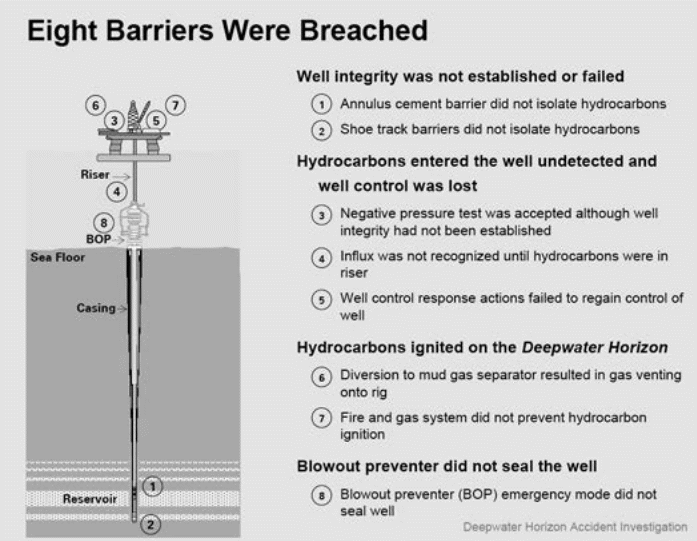
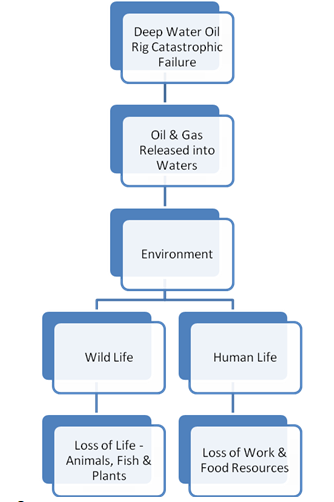
As demonstrated in the diagram, there are two major areas of concern in regards to the Environment in this event tree; Wild Life and Human Life. However, “the number of animals—marine mammals, fish, birds, and bottom-dwelling species, such as crabs—that died from ingesting, inhaling, smothering, or dermal contact with oil and dispersants will never be known because these individuals are decaying at the bottom of the ocean.
In addition, the Macondo oil spill occurred during the prime reproduction cycles of marine species; thus, future populations of key food sources, such as oysters, shrimp and Bluefin tuna, were placed in jeopardy as was the fishing industry that relies upon healthy populations of these species” (Rose & Hunt, 2012:6).
The human life was negatively impacted as those who depend on the fishing industry could not fish during the time of the spill hence affecting their income and their way of living. With time, they were able to put in claims to BP for compensations of their lost wages, but the impact still did not affect many works from the fishing industries as well as those industries who conduct business with the fishing industries.
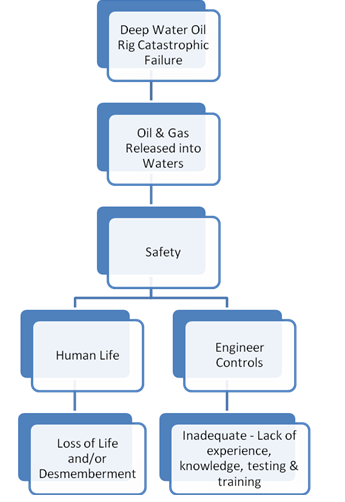
In any project, safety is always a top priority. In Deepwater Horizon, lack of safety preventative measurements took the life of 11 people (Jonsson, 2011). Therefore, it is important to ensure that the equipment put in place for preventative safety measures is functional and fully operational for their intended use.
This is essential for the safety of workers. However, “a series of managerial mistakes and safety equipment failures” (Josnson, 2011:23) caused the life of the 11 workers who were killed that day of the oil spill.
Engineer controls are also part of safety as they are the preventative tools and equipment used to minimize the risk of a spill. Importantly, “blowout preventer systems should be redesigned, rigorously tested and maintained to operate reliably, with proper training in the use of these systems in the event of an emergency” (Josnson, 2011:6).
Sources of construction project risk
Construction project is considered to be fraught with various hazardous risks. For that reason, they are likely to constrain attainment of major project objectives especially in terms of cost, time and quality targets. As a result, inability to attain these objectives usually has negative implications to project stakeholders.
According to Owens (2012), there are various sources of project risks in any construction work. Therefore, all projects must invest in infrastructure that seeks to mitigate and manage these risks. However, the infrastructure must be well incorporated within the project objectives.
Therefore, the source of risks needs to be identified in order to determine effects they have that could affect project objectives. Moreover, according to National Academies Report (2012), it is believed that risks in construction projects can be identified at their initial stages especially in their planning and feasibility stages. However, impacts of these risks cannot be felt before its construction and production stages.
Notably, changes in requirements and scope of the project form a basis of risks in construction projects. Moreover, omissions and errors in the construction works also form a source of risks in the project.
This was prevalent in the Deepwater Horizon case since there were various sequences of mistakes that were committed during the project which exposed it to risks. For instance, Transocean, Halliburton and BP failed to promote safety culture of entire energy project (Rose & Hunt, 2012).
In addition, having insufficient skills acted as a source of risks to the construction project. This was affirmed by Rose and Hunt (2012) when they postulated that there was lack of technical expertise in the project. As a result of this, the project lacked scientific understanding of the Gulf waters which was a fundamental requirement in the project.
Nonetheless, in respect to Deepwater Horizon, the source of risks can be traced from its initial planning phases where various flawed decisions resulted to a disaster that led to explosion and blowout that eventually caused lives of eleven workers.
In respect to this incident, it was established that inadequate factual assessment of the potential risks resulted to the disastrous event. Moreover, disregard of the early warnings of possible failure of blowout also can be attributed to the explosion.
In addition, it was alluded by National Academies Report (2012) that technology is a key factor in project management. Therefore, in the construction works, it is quite important to have the required technology that is required to carry out the required technical tasks.
However, in the event of inadequate technology, a project in question is exposed to various risks. As a matter of fact, this was a problem in Deepwater Horizon case since it had insufficient technology that was necessary to contain, respond and clean up any eventualities of spills that were bound to occur in the deep waters.
Furthermore, Rose and Hunt (2012) attributed the source of Deepwater Horizon catastrophic event to the regulatory oversight inadequacies of the entire exploration and production of energy. The regulators in this project failed to carry out a comprehensive study of the exploration and production of the project hence exposing it to disastrous effects.
Nonetheless, sources of risks to construction project can be broadly categorized into internal which are usually controllable sources and external which are usually uncontrollable sources. The internal sources concern issues that relate to project itself, its consultants in respect to its design, construction, cost management, its suppliers, contractors and subcontractors.
On the other hand, external sources entail globalization and economic dynamics, social cultural issues, environmental constraints, political controls, health and safety constraints that relate to the project and any unforeseen circumstances. Both internal and external factors were capable of leading to catastrophic risks to the project.
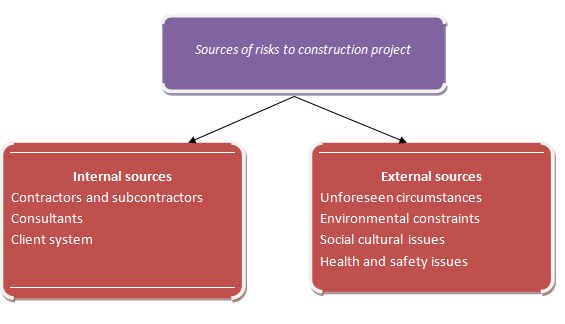
Issues that may impede or impair the completion of the project
There are various issues that affect completion of projects in any construction industry. These delays are always expensive to every stakeholder involved in the project. Nonetheless, these delays are usually caused by fundamental issues that take place during the construction phases of the project. However, construction delays in most cases are a common problem in most projects.
There are various unpredictable issues that result from the already discussed sources that affect construction projects. As a matter of fact, the contractor and the owner of the project are liable for delay costs in any project.
Nevertheless, issues that impede completion of the project fluctuate as per the weaknesses and faults of the contractor and the owner of the project. Therefore, there is need to identify possible delay issues and thereafter identify possible actions that are capable of countering these delays.
Impediments to completion of projects can as well be categorized as internal or external issues. Some of the internal issues relates to cost. Cost can be as a result of unpredicted prices that may be as a result of inflation which results to fluctuation of construction materials.
This result to overestimated cost overran which may be beyond the means of the owner and that of the constructor of the project. Moreover, excessive procedures in the approval protocol in the administrative departments of the government also acts as a hindrance in the construction projects.
Moreover, the delay may also be caused by breakdown in labor issues, insufficient supply of equipments, problem with the service providers and even client related issues.
For that matter, prevalence of any of these issues results to retardation of the project. In most cases, client related issues comprise of his or her financial status, construction complexity which in most cases are the biggest reasons for the failure of construction projects.
Systems to address construction project risk
Addressing construction project risks requires identification of potential risks and their effective management. However, addressing these risks overlaps with the regular management procedures and process accomplished in the management of the project itself.
As a result of various risks that the construction projects are exposed to, it is relatively important to have systems in place that are capable of addressing or eliminating them. According to Reese (2005), addressing these risks require their identification and thereafter instituting mechanisms that are capable of mitigating them.
Therefore, according to Birkland (2009), there is need of integrating project management and risk management in order to address any identified risk. However, there are two major systems that are capable of addressing construction project risks.
These are ad hoc command systems and National Incident Management System. These systems are widely used in the United States (US) in managing project associated risks. The two systems can be applied in any project environment irrespective of its magnitude.
Nonetheless, despite level of efforts given and applied to planning and preparing ad hoc command systems and National Incident Management System for mitigation procedures to prevent destruction, risks will continue to occur. It is therefore imperative that emergency operations personnel must be ready to respond when the need arises and they should be always in risk preparedness mode.
However, it is not enough that emergence prevention and mitigation should be solely left to emergency prevention personnel to be formulating ad hoc command systems for each and every case. National Incident Management System therefore comes in handy since it reinforces risk preparedness and tackles any uncertainty despite its massive magnitude.
According to National Incident Management System (2008), National Incident Management System (NIMS) gives standards that help in guiding departments and organs in the government, private sector, non governmental organizations to help them prevent, protect, respond recover and mitigate emergency incidents regardless of their cause, magnitude or complexity in effort of lowering their effects.
Some of the adverse effects include loss of life, property and degradation to the environment. As for such, National Incident management System becomes crucial in the emergency management since it is proactive and reactive for any kind of emergency situation.
To start with, National Incident Management System (2008) states that NIMS components are adaptable to any situation. This means that they can be utilized in all situations and from local to interstate to international situations.
In addition, when emergency management personnel develops ad hoc plan systems to manage a certain situation, it is usually tailored to that particular situation and incident and it can also be applied to another related environment. However, flexibility of NIMS makes it scalable for management of diverse emergency issues.
In addition, a good emergency response system is required to be standardized in the sense that it can be able to manage incidents of any magnitude. Homeland Security (2004) states that NIMS has practices that are coupled with consistency and national standardization that can be carried out to all incident management processes.
NIMS therefore provide for a standard structural organ that facilitates integration of separate jurisdiction and professions for the common aim of disaster preparedness.
National Response Framework (2008) provided that National Incident Management System has a guideline for implementing nationwide disaster to all types of domestic catastrophic incidents. This policy is therefore adequate in dealing with any emerging emergency of any size since it provides for any kind of resources needed for the appropriate actions.
The framework also provides for coordination of relevant organs. Coordination in the event of an emergency is critical since services of several players are always needed in the occurrence of a disaster. With NIMS in place, coordination among players is guaranteed since their roles and responsibilities are already outlined in the policy.
Annexes from the national response framework (2008) provides for a structure for coordinating federal interagency for a federal response to an incident. For example, resources are assigned to various stakeholders as per their abilities. There is also an Emergency Support Coordinator whose role is to carry out a unified command appropriately to the supporting agencies in the event of a calamity.
In addition, ad hoc command systems, plans are usually for a situation at hand and therefore be instituted when there is a threatening danger. However, in emergencies, the event at hand may just be an initial phase of a larger, rapidly growing threat which the plans formulated for the initial situation may not be able to contain.
However, National Response Framework (2008) covers for the growing threats since NIMS provides for framework that incorporates standardized guidelines that are able to solve on scene events and any anticipated escalation of the situation at hand by facilitating innovative measures and availing resources from different organs.
This makes NIMS to be more proactive in emergencies than ad hoc command systems since it’s capable of containing events from surging.
It’s also important to note that NIMS provides for disaster preparedness that is a key component to the disaster mitigation program. Preparedness that is done early enough ensures that there is effective response in the event of occurrence of any calamity.
Preparedness means having plans in place, availability of resources, training of stakeholders, having qualified personnel, good equipments and regular evaluation of the disaster preparedness situation. Birkland (2009) also notes that learning to mitigate natural disasters are incremental therefore; training of the personnel should be a regular practice just as it’s provided in the NIMS.
National Incident Management System (2008) also provides for an ongoing management and maintenance program. This is done through National Integration center which provides strategic direction, oversight and coordination which ensures routine maintenance for continuous refinement of NIMS components.
Reese (2005) furthers the suitability of NIMS when he affirms that NIMS statewide interoperability for emergency responders by having cooperation of several players in all levels of the administration.
This makes NIMS to remain proactive at all time and in a stand by mode for any eventuality. On the other hand, ad hoc command systems may help for short term basis which means that there is no maintenance to the formulated plans.
Moreover, National Incident Management System again provides for a constant flow of information among the relevant organs and bodies that are responsible for response in the emergency situations.
There is a formal established structure of communications that provide current and up to date information to support this system. However, Moss, Charles and David (2009) affirmed that insurance coverage should be in place to cushion bills encountered following a disaster in a construction project.
However, taking a related catastrophic case of Hurricane Katrina, a calamity which occurred in United States of America on August 29, 2005 in three states of Louisiana, Mississippi and Alabama, the government was critiqued for having taken long to respond.
This emergency hit United States when National Incident Management System of 2008 was not in place and therefore, there was no defined organs that were charged with the responsibility of containing the situation hence conflict of responsibility was witnessed since White House took too long to decide whether federal government was to intervene.
This incident is described by Farazmand (2007) as a grand failure in crisis and emergency management. It highly believed that the failure was as a result of a weak National Incident Management System that was in place at the time since the emergency team that was handling the situation was using an ad hoc plan that did not spell out the roles and duties of the stakeholders to facilitate swift coordination among relevant bodies.
Therefore, it is important that ad hoc plan system should be applied in the event of smaller magnitude risks and greater magnitude risks should be left to National Incident Management System for their containment.
Moreover, Lock (2007) again affirms that with National Incident Management System, when a disaster occurs, emphasis is shifted to response where by priority is given to building capabilities to save life, protect property and the environment.
This is done depending on the magnitude of the incident where by federal government may be called if it is of greater level or be left to states or community when it’s of less extent. In the event where ad hoc plan command system is to be utilized, initial rescue time should be used by stakeholder to quickly draft a plan to handle the case.
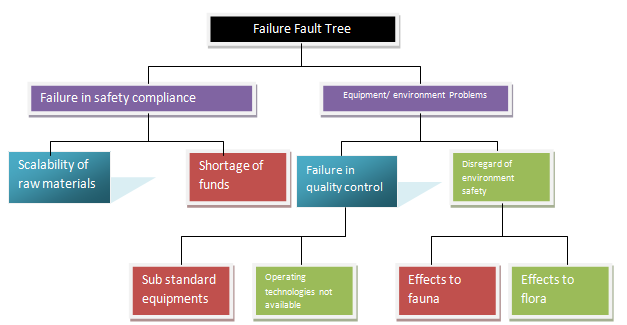
Discussion of Fault Tree
There are various faults that are associated with the construction project. To begin with, Deepwater Horizon was associated with failure in safety compliance which was supposed to be identified early enough and proper steps taken to mitigate it.
For that matter, to be able to mitigate this failure, it was important that administration of occupational health and safety be addressed to prevent failures that are associated health issues. Disregard of these issues in terms of regulation and compliance were enough reasons to fines being imposed to the contractor which in the long run affected the project’s costs and timeline hence having drastic effects to the entire project.
Moreover, failure in quality control further resulted to additional costs. For instance, poor works done in the construction processes required redoing of these tasks which resulted to incurring additional expenses. In the project processes such as plumbing, electrical and carpentry required some element of standards to be followed.
However, in some cases, these standards were never obeyed in the construction projects hence becoming a failure. As a result, the project suffered various setbacks which in turn affected the entire project. Consequently, project completion timelines were also affected in addition to the extra expenses which came as a result of extra labor costs.
However, it was relatively important to ensure that all these catastrophic failures in the projects were reduced, mitigated and avoided at all cost in the project to prevent their environmental effects. For that reason, it was relatively important that these risks should have been avoided right from the planning phase of the project.
Proper planning that obeys quality standards and guidelines were prerequisite in reducing any potential risks in the Deepwater Horizon. In relation to environmental control and safety, it was relatively important that checks and balances should have been obeyed in every step of the project.
However, in the event of these risks taking place, it was important to institute proper mitigation measures to solve them. However, mitigation measures are always specific as per the type of risk in question.
Therefore, all possible measures must be weighed and the most appropriate applied to that particular situation. Nonetheless, regular review must always be conducted to ensure that all construction project processes are within the required standards in order to avoid these risks as in the case of Deepwater Horizon.
Conclusion
There are several risks that arise in any construction project. These risks can arise at any stage of the project and therefore all stakeholders should always be alert in identifying any possible risk and instituting possible solutions to address them.
Nonetheless, it is also relatively important to ensure that these risks are predicted early enough in order to place measures that seek to avoid their occurrence. However, any risk that is identified must be well understood in order to craft suitable measures that are both proactive and reactive in their management.
To this end, it is important to acknowledge that management of risk is fundamental in accomplishing objectives of any project and to ensure that positive result are obtained from the project.
Therefore, it is imperative that supervision of the project should be done in order to manage any risk that threatens the project. Nonetheless, it is relatively important to acknowledge that risks cannot be totally eliminated in project processes. Therefore, measures must be put in place that seeks to contain the risks.
References
Birkland, T. A. (2009). Lessons of Disaster: Policy Change after Catastrophic Events. Washington, D.C: Georgetown University Press.
Farazmand, A. (2007). Learning from the Katrina crisis: A global and international perspective with implications for future crisis management. Public Administration Review, 67 (Supplement D) 149-159.
Homeland Security. (2004). Fact Sheet: National Incident Management System. Web.
Jonsson, P. (2011). Halliburton ‘destroyed’ evidence after Gulf oil spill, BP charges. Christian Science Monitor, 57(2),16.
Lock, D. (2007). Project Management. London: Gower Publishing Ltd.
Moss, M., Charles, S., & David, A.B. (2009). The Stafford Act and Priorities for Reform. Journal of Homeland Security and Emergency Management, 6(1). Web.
National Academies Report. (2012). Approach to Offshore Drilling. Professional Safety, 57(2), 16.
Owens, P. (2012). Run to Failure: BP and the Making of the Deepwater Horizon Disaster. Library Journal, 137(2), 84.
Reese, S. (2005). State and local homeland security: Unresolved issues for the 109th Congress. CRS report to Congress RL32941. Web.
Rose, M. & Hunt, B. (2012). Learning from Engineering Failures: A Case Study of the Deepwater Horizon. Technology & Engineering Teacher, 71(5), 5-11.